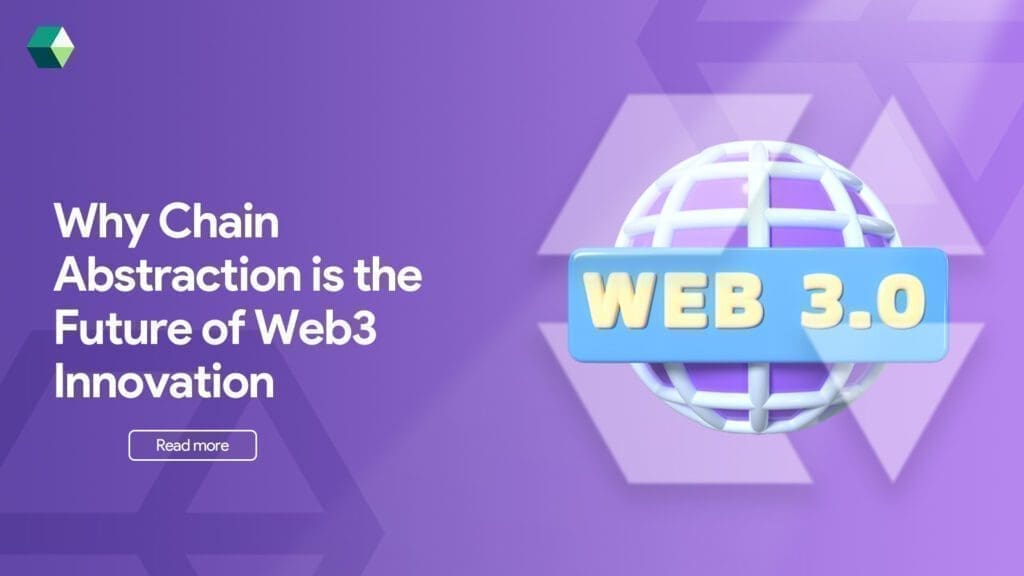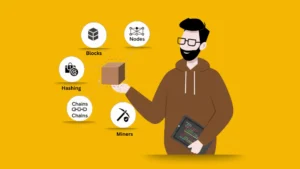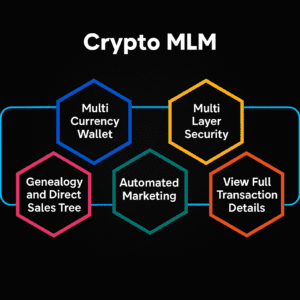
The blockchain world is growing rapidly, with more and more networks offering unique benefits. However, this has also created challenges like fragmented ecosystems, security risks, and complex user experiences. Businesses looking to build on blockchain through Web3 Development Services often struggle to navigate multiple chains efficiently.
Chain abstraction is the game-changer that solves these issues. It simplifies blockchain interactions, making it easier for users and developers to work across different networks seamlessly. With the rise of Web3 Development, chain abstraction is becoming a crucial technology for businesses and individuals looking to harness blockchain power without the complications.
Understanding Chain Abstraction
Chain abstraction refers to the process of simplifying interactions between different blockchains, allowing users and developers to interact with multiple networks without needing to understand their underlying complexities. It provides a unified layer that abstracts away the differences between various blockchain ecosystems, enabling applications to function seamlessly across multiple networks.
For example, imagine a scenario where a user wants to trade assets between Ethereum, Binance Smart Chain (BSC), and Solana. Traditionally, this process would involve switching between different wallets, manually bridging assets, and paying gas fees in different native tokens. However, with chain abstraction, the entire process happens behind the scenes, allowing the user to complete the transaction effortlessly without worrying about network-specific complexities. This approach significantly enhances the user experience and makes Web3 solutions more accessible to mainstream audiences.
Challenges of a Multi-Chain Blockchain Ecosystem
The presence of multiple blockchains introduces several challenges that hinder the widespread adoption of Web3 development solutions:
-
Fragmented Liquidity and Ecosystems
Each blockchain operates as an independent ecosystem, with its own liquidity pools, smart contracts, and governance mechanisms. This fragmentation creates inefficiencies and makes it difficult for users and developers to access liquidity across different networks. As a result, assets often remain locked within specific chains, limiting their usability and hindering the growth of Web3 solutions.
-
Complex and Confusing User Experience
One of the biggest obstacles to mainstream blockchain adoption is the complexity of using multiple networks. Users are required to manage different wallets, switch between networks, and pay transaction fees in different cryptocurrencies. This process can be overwhelming, especially for newcomers, and discourages people from engaging with Web3 development services.
-
Security Risks of Cross-Chain Bridges
Cross-chain interactions typically rely on centralized bridges, which act as intermediaries for transferring assets between different blockchains. However, these bridges have been frequent targets for hackers, leading to significant financial losses. Chain abstraction reduces reliance on centralized bridges, improving the security of Web3 development.
-
Scalability Limitations and High Transaction Costs
As blockchain adoption grows, network congestion and high gas fees become major concerns. Many blockchain networks experience slow transaction speeds and increased costs during peak usage periods. A Web3 development company that integrates chain abstraction can optimize scalability, ensuring more efficient and cost-effective transactions.
How Chain Abstraction Solves These Problems
-
Seamless Multi-Chain Interactions
Chain abstraction enables users to interact with multiple blockchains without needing to manually switch networks or manage different wallets. This means that users can perform transactions and access dApps across various blockchains effortlessly. By integrating chain abstraction, Web3 solutions become more user-friendly, reducing friction and enhancing accessibility.
For example, a decentralized finance (DeFi) platform using chain abstraction allows users to trade assets between Ethereum, Polygon, and Avalanche without requiring manual asset bridging. The entire process is handled automatically in the background, making transactions smooth and intuitive.
-
Unified Liquidity and Cross-Chain Asset Transfers
Chain abstraction enables liquidity to be aggregated across multiple blockchains, eliminating the inefficiencies caused by fragmented ecosystems. This means that DeFi platforms, NFT marketplaces, and lending protocols can operate more efficiently, providing better services to users. Businesses leveraging Web3 development services can create interoperable dApps that allow assets to move seamlessly across different networks.
-
Enhanced Security and Trustless Cross-Chain Transactions
By leveraging decentralized interoperability solutions such as zero-knowledge proofs and cross-chain messaging protocols, chain abstraction reduces the need for centralized bridges. This enhances the security of Web3 development, protecting users from potential hacks and vulnerabilities.
-
Improved Developer Experience and Faster Innovation
For developers, chain abstraction simplifies the process of building multi-chain dApps. Instead of writing custom code for each blockchain, a Web3 development company can use a unified framework that seamlessly integrates with multiple networks. This reduces development time, lowers costs, and accelerates innovation in the blockchain space.
Real-World Applications of Chain Abstraction
-
Decentralized Finance (DeFi)
DeFi platforms can leverage chain abstraction to enable seamless cross-chain lending, trading, and staking. This ensures users can access the best financial services without dealing with network-specific complexities.
-
Gaming and NFT Interoperability
With chain abstraction, gamers and NFT collectors can move assets across different metaverse environments effortlessly. This enhances the usability of Web3 solutions in the gaming industry and opens new possibilities for cross-chain NFT marketplaces.
-
Decentralized Identity and Payments
Chain abstraction allows users to maintain a single digital identity across multiple blockchains, simplifying authentication processes and improving security in decentralized applications.
-
Enterprise Blockchain Adoption
Businesses looking to integrate blockchain technology can benefit from Web3 development services that utilize chain abstraction. This simplifies blockchain adoption and allows enterprises to interact seamlessly with multiple networks.
The Future of Chain Abstraction in Web3
As blockchain technology continues to evolve, Web3 development companies will increasingly adopt chain abstraction to create more scalable and interoperable solutions. Future developments will focus on making blockchain interactions as seamless as traditional web applications, driving mainstream adoption.
With advancements in AI, smart contract automation, and decentralized protocols, Web3 solutions will become more secure, efficient, and accessible to a global audience. Chain abstraction will play a key role in shaping the future of decentralized finance, gaming, supply chain management, and enterprise blockchain adoption.
Join the Web3 Revolution — Act Now!
Chain abstraction is a revolutionary advancement in Web3 development, providing a seamless, secure, and efficient way to interact with multiple blockchain networks. By eliminating technical barriers, improving security, and enhancing user experience, chain abstraction makes Web3 development services more accessible to businesses and individuals alike.
As the blockchain industry continues to grow, integrating chain abstraction will be essential for creating scalable, interoperable, and user-friendly Web3 solutions. Whether in DeFi, NFTs, gaming, or enterprise blockchain applications, this technology will shape the future of the decentralized web. By embracing chain abstraction, businesses and developers can stay ahead of the curve and drive the next wave of Web3 innovation.







